All the British makers initially offered the .303, but as each developed their own calibres to feed an imaginative market so the .318, .350, .375 2 1/2" and others started to take a share of the market in small bores. Another theory is the ban on .450 calibre rifles by the British Government in 1907, may have worried makers about the adoption of anything too military based and so the .303 fell out of favour.
The rifle here is a lovely Westley Richards fixed lock ejector that was completed in 1900 and sold via our London, Bond Street address. Often the giveaway of these pre 1900 rifles is the lovely swamped ribs which have a short raised island holding the express sight as opposed to the later adoption of a full quarter rib. This particular rifle has all the hallmarks of the period, including fine house scroll engraving, checkered side panels and the distinctive Westley Richards kidney cheek piece. The 'bolted' safety is another of those lovely features that existed on many pre-war double rifles built by Westley Richards, H & H and J.Rigby.
In unmolested condition, complete in its oak and leather case the rifle is another of those classic time capsules that we all like to stumble across from time to time.












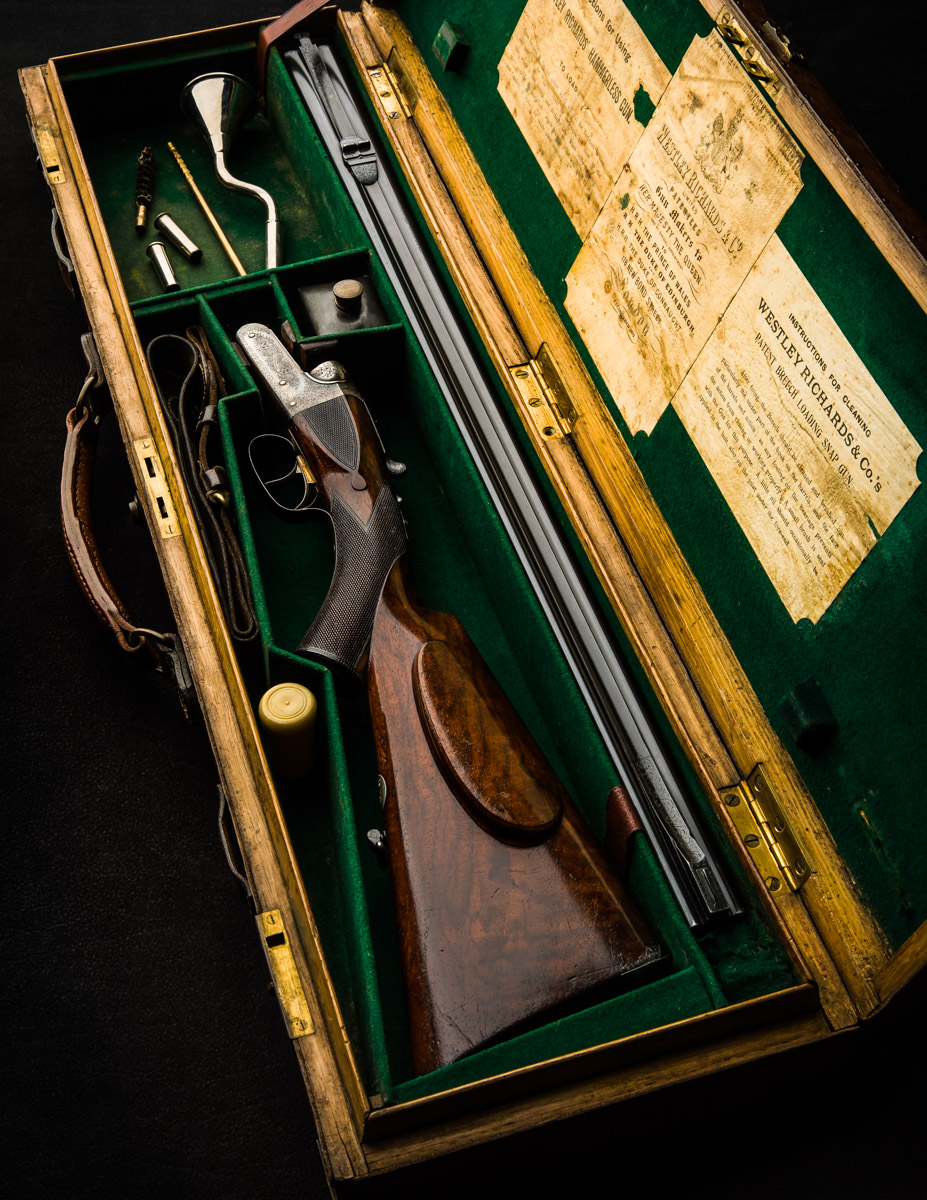
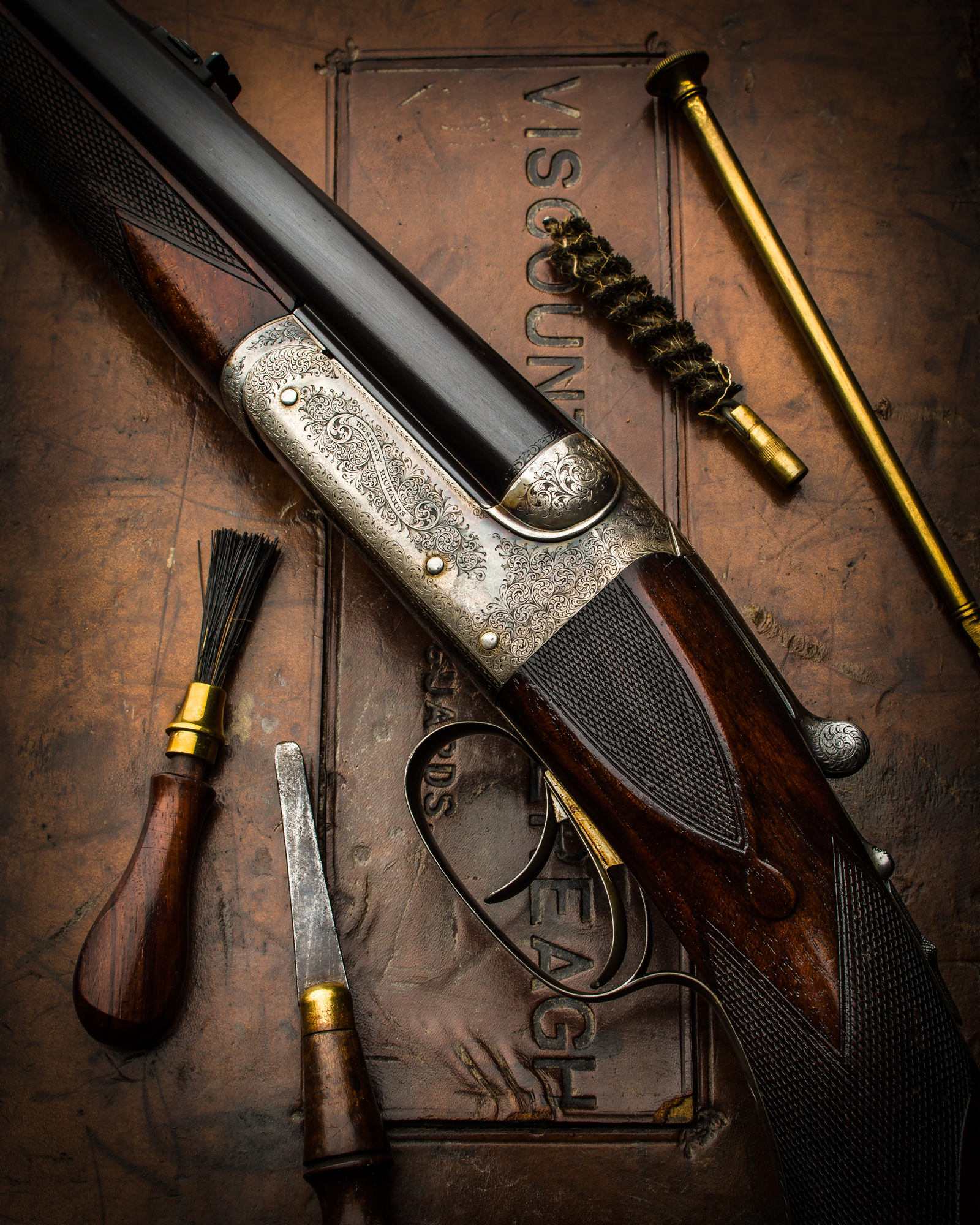
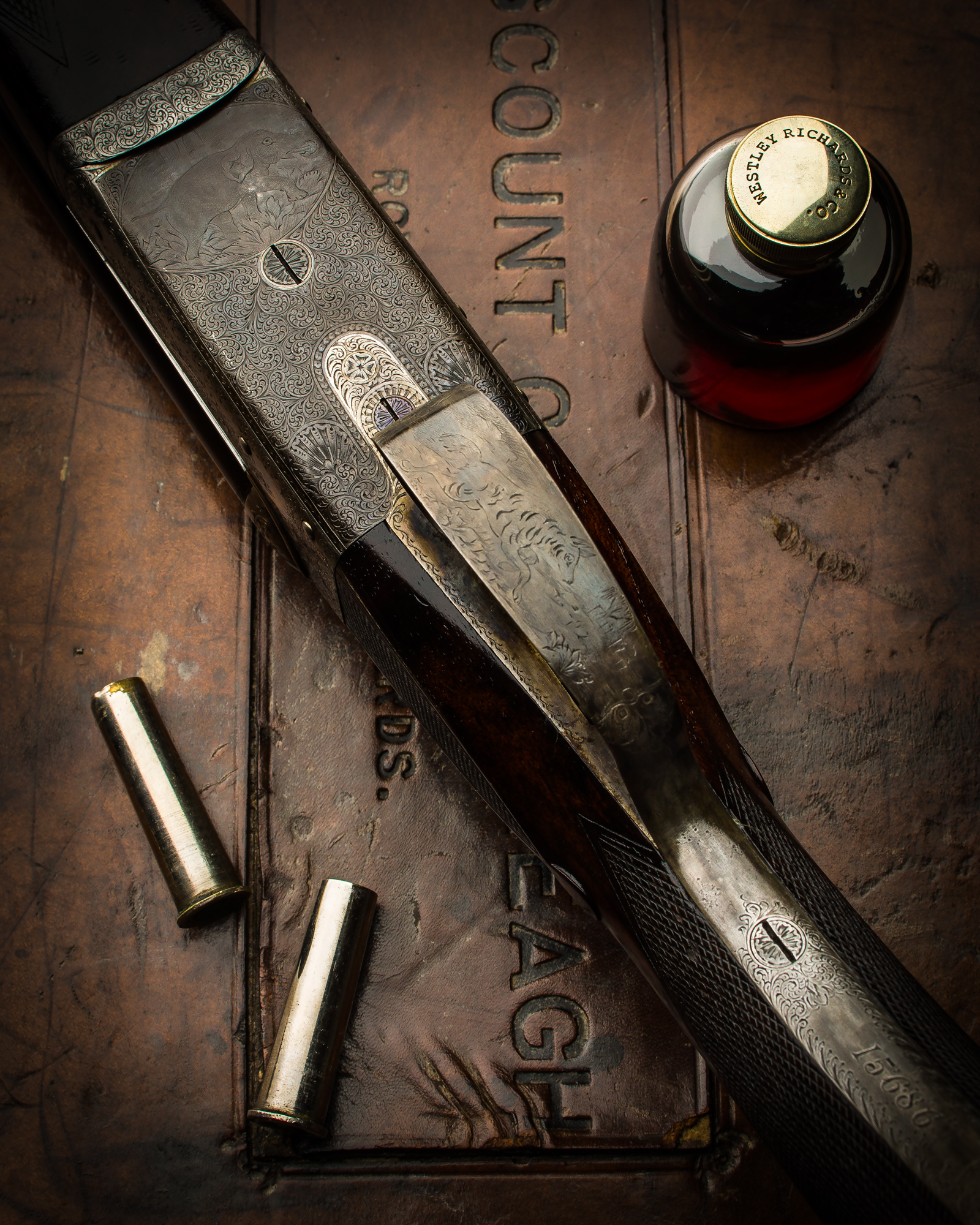
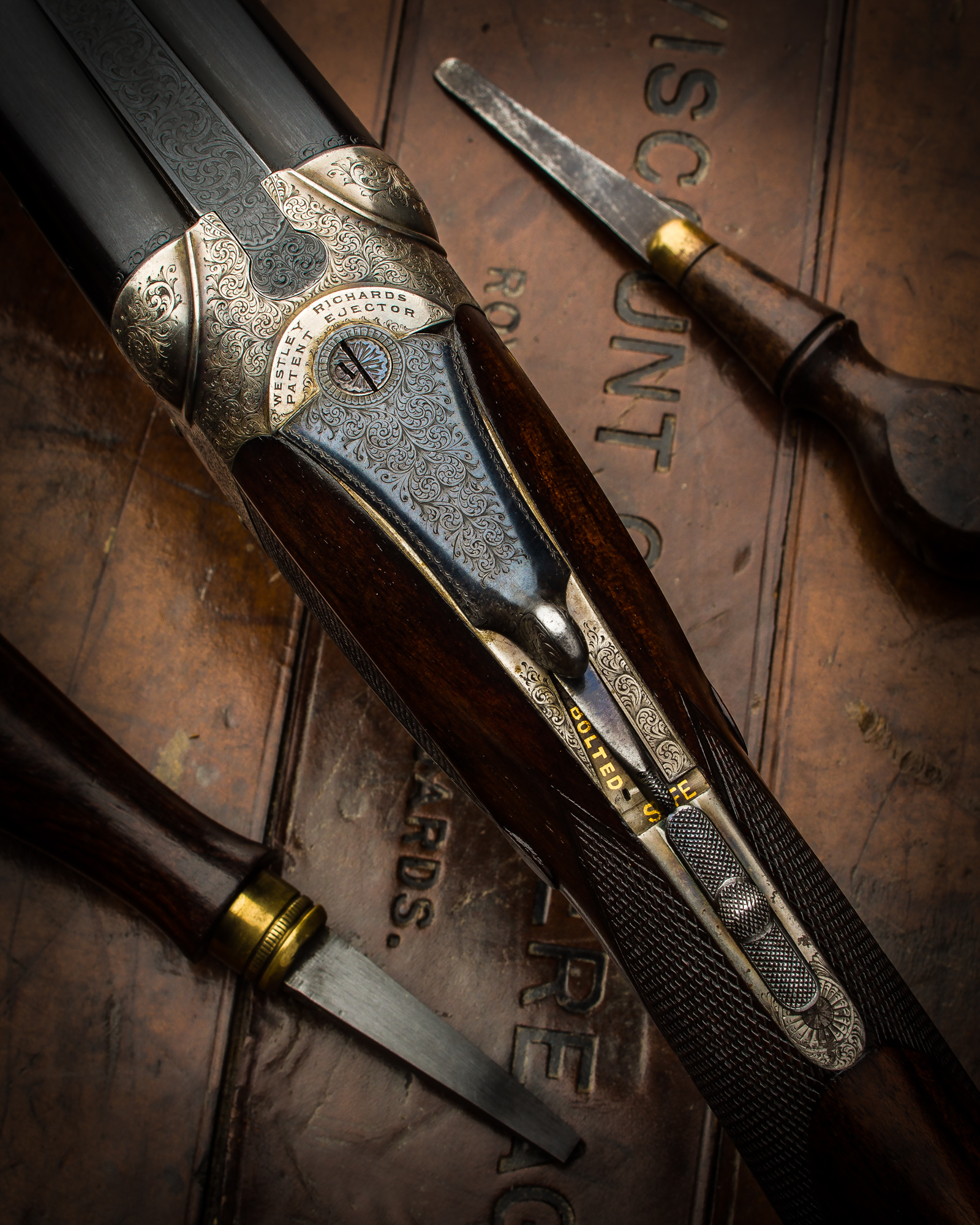
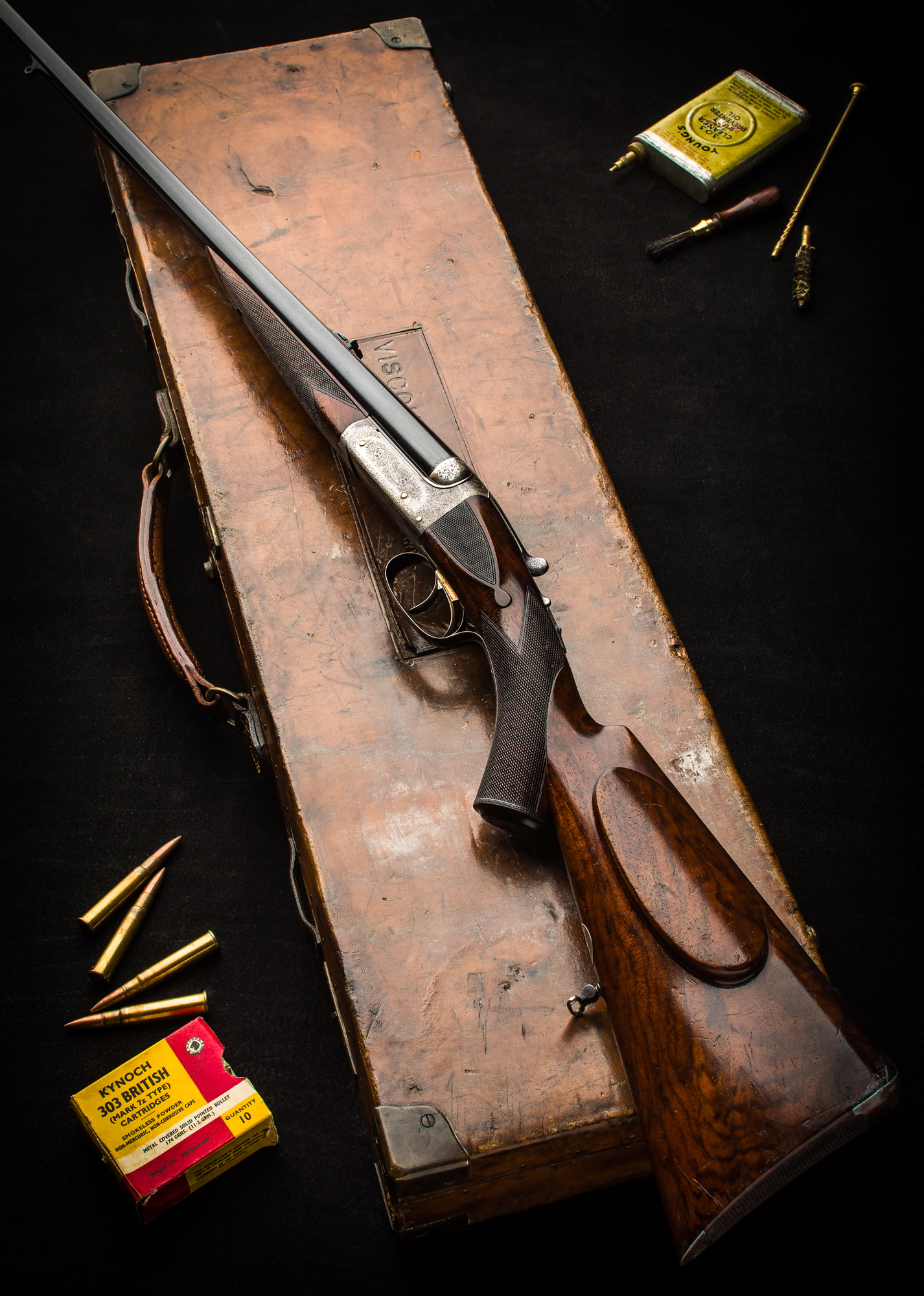
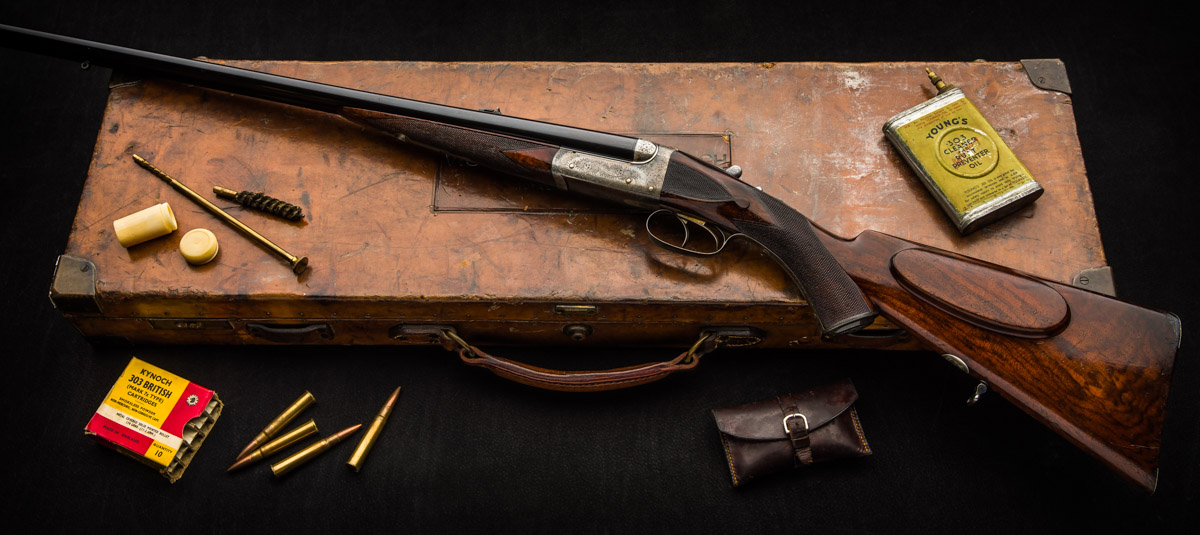






Ned Cowell on April 25, 2017 at 4:53 am
Dear Trigger
That is absolutely charming. I shoot Lee Enfield service rifles and I have a particular fascination with the .303 as a sporting cartridge. I love the thought of a double rifle suitable for 'ordinary' deer sized game. The checkered side panels on these rifles always draw my eye - fantastic.
I believe that the army would use boiling water to clean the bore as a means of combating the destructive effect of the original cordite/mercuric primer ammunition. Is the item in the case a cranked funnel to be used for this purpose, or is it something else?
I also note that the ammunition in the picture is the later military Mk VIIz type - does Kynoch still make this, or is it just an old box in nice condition? Does it shoot this ammunition ok, in spite of being regulated with the 215 grain load?
Final question before I stop pestering you: How often do you come across rifles chambered for your proprietory .375/.303 round. I ask because you mention the desire for alternatives to military rounds, and I understand from an older post, and other material that I have read, that this was effectively a longer version of the military cartridge that gave superior ballistics with the same bullets. It seems to have been short lived, but it must have been a superb round!
Many thanks for another great post - I can now continue my working the day with a big smile on my face!
All the best
Ned
David Hodo on April 25, 2017 at 10:56 am
Although not a fan of the .303 caliber, I would certainly be a proud owner of the double rifle presented in the post! Another perfect Westley!
Thanks Trigger!
David Hodo
Neill on April 25, 2017 at 1:05 pm
Another lesson from theexplora, I'd never regarded the .303 as a sporting round! It makes good sense though. Like you say, the ammunition would have been readily available.
Glorious rifle as always, it amazes me where you keep finding them!
Larry on April 26, 2017 at 5:50 am
Very cool rifle. I love the bolted safety and the case!!! You're really getting some brilliant vintage guns through, these days!!!
Chris Buckingham on April 26, 2017 at 6:37 am
You have brought another superb rifle back into the daylight for us to drool over. The 303 ,when used with the 215 grn bullet is a very capable caliber, coupled with the fact that serving Officers would have access to unlimited ammunition ,this must have made it a popular choice, I have a G,Gibbs Farquharson in 303, and it is a very handy ,light weight rifle, that could be carried all day, the double must handle very fast and point like a wan. Many thanks for showing us this gem !
David Hodo on April 26, 2017 at 6:40 am
Ned,
In response to your question about using boiling water for rifle cleaning in years past, even though though your post references corrosive primers as the reason.....When I left Iraq in 2009 as an International Police Officer, I was told to make a final cleaning of my modern day M4 by field stripping it and taking it in a hot shower! This was not only for the bore but for any accumulation of dust and sand which had worked its way into every crevice over time. It worked very well. Lay in the Iraqi sun for initial drying, then give it a good detailed oiling. Rifle would be like new and very clean! This is the only time I can recall of being told to take a weapon into a hot shower during my military and police career! Thanks for your informative post!
David Hodo
Ned Cowell on April 27, 2017 at 6:45 am
Dear David
That is very interesting! A really thorough cleaning method - provided that you have the right climate to get it dry in. Thank you for that!
Ned
Peter Buckley. on April 27, 2017 at 9:37 am
Dear Trigger
Wouldn't mind falling over this one myself, I suppose it just walked in through the door! Both rifle and case in great untouched condition, just love the "bolted" safety.
The Westley fine scroll engraving just typical but I must say that the game scene engraving looks a little 'naive', or was this typical from around that period ?
Is it regulated for 50 and 100 yards ?
Many makers of fine quality rifles supplied a funnel for boiling out the barrels along with all the other accessories in a case possibly to rid the barrels of the problem of mercuric primers or maybe just as an aid to cleaning, or is it a leftover from black powder days?
The .303 round must have been quite popular as a sporting calibre even military rifles were 'sporterised' and brought into the field.
Tell me what's the brass pistol cleaning rod doing in the case, or is it just a photographic prop ?
Another great Westley rifle, another great post. Thanks Trigger.
Kind regards. Pete.
Keith on April 27, 2017 at 3:38 pm
Guns from a more civilized age!
.303 is everything that the .308, 7mm and 8 mm Mauser are in the hunting field,. And like the .308, .303 will penetrate deeper in game than the .30-06 when loaded with the same weight bullets. Sighted at 250 yards and shooting to 300, the.303 is within half a minute of the trajectory of the 7mm Remington mag with the same weight bullets.
As a heavy machine gun round, both .303 Mkvii and 8mm Lebel Balle D, had approximately 50% greater range for laying down a barrage than the .30-06 and the .30-06 M2 ball loading. .303 mkviii had even better long range performance. During the war that made the world safe for Lenin, Trotsky, Benito Mussolini, Hitler, Generalissimo Franco... The .303 mk vii, also had approximately 50% greater effective (and Max) range compared to the military loading of 8x57 IS
With the correct bullet for the job (assuming that it regulates in that lovely double), a properly loaded .303 (not a load castrated by American factories and propaganda) will handle Eland, moose and big reds (and elk) as well as any "modern" chambering, and better than most.
Years ago, there was a solitary round of .303 with a Leslie Taylor copper capped bullet, in my father's gun cabinet. I can't recall what the headstamp was, and don't know what happened to it.